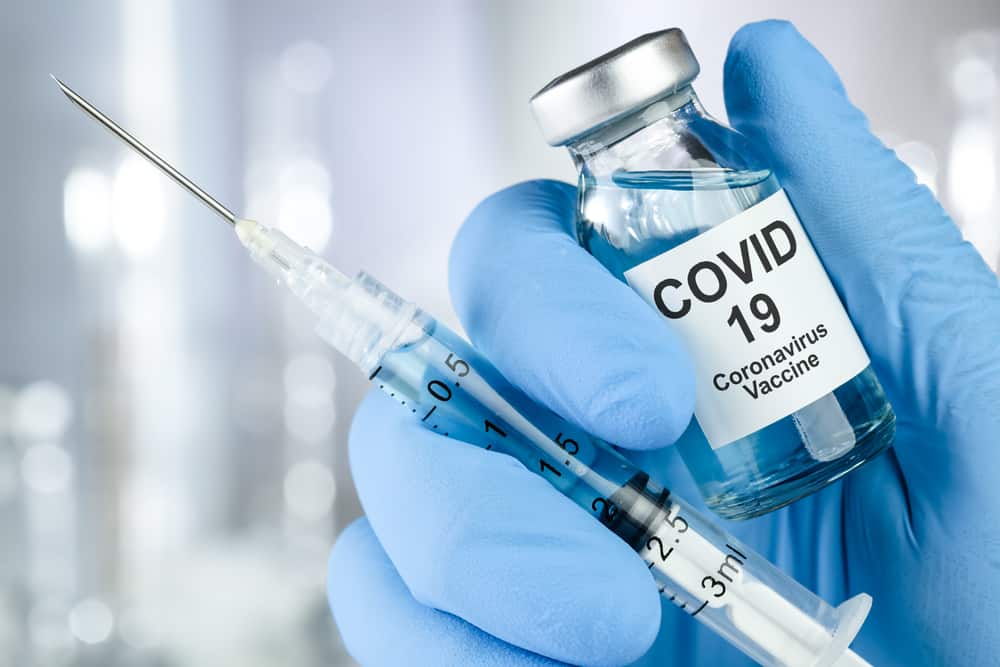Track Switzerland's vaccination progress
A new web app allows interested parties to track the progress of vaccination coverage throughout Switzerland and in their own canton of residence. Eawag has also found that the risk of infection on surfaces is low.

The largest Swiss vaccination campaign ever has started and the Federal Office of Public Health (FOPH) is confident that it will bring the coronavirus under control in the foreseeable future. To date, 314,200 doses of the Covid 19 vaccine have already been administered in Switzerland. This corresponds to a vaccination rate of 5.6 % in the highest risk group. But what is the next step? What is the vaccination sequence? Is there any sign of an end to the pandemic and the numerous restrictions on the population?
What is the situation in my canton of residence?
On the new web app of the AWK Group at https://impfcounter.ch/ you can constantly see how the vaccination coverage of the population is progressing throughout Switzerland and in your own canton of residence. The aim of the data analyses was to provide interested parties with a practical and user-friendly tool to follow the vaccination of the population live. According to AWK, the app provides a constantly updated overview of the number of vaccine doses administered and the vaccination status achieved in percentage terms with regard to the targeted herd immunity. From today's point of view, this is likely to be achieved when around 80% of the nationwide population have been vaccinated, subject to the emergence of further mutations.
Information on ordered and available vaccine doses
If you want to know the current vaccination coverage in your canton of residence, you can find accurate and up-to-date information in the corresponding section, which covers all cantons in Switzerland. The app also provides interesting facts and figures on the vaccine doses ordered and available, as well as on the vaccines approved in Switzerland.
Jonas Dischl, Head of Data Analytics & AI at AWK Group, is also confident that the data will allow initial statements to be made about when a return to normality can be expected: "Very many factors are still unknown. However, from our data we can draw conclusions as to when the pandemic in Switzerland could be over in purely mathematical terms. We assume that the pandemic will be over when the most critical risk group has been completely vaccinated. We use the average number of vaccinations over the last seven days as the basis for our calculation. On the basis of this figure, we extrapolate how many days it will take until the 2,353,410 people affected have received their two doses of vaccine. As the vaccination rate increases, the forecasts are continually adjusted."
Detailed information on the risk groups and the recommendations issued by the FOPH on the order in which the various groups of the Swiss population should be vaccinated can also be found in the app under "Priority Groups".
The data used for the analysis is based on official FOPH data as well as data from the non-profit organization "Our world in data" and is modulated with data analytics tools and visualized in dashboards, AWK concludes.
Source: AWK Group
Other Covid 19 issues:
Wastewater also discovers new corona mutations
Covid 19 risk increases with pollen count
Low corona risk on surfaces
New studies involving Eawag show that we need not worry too much about being infected with the new Sars virus by touching buttons or keys, at least compared with other possible routes of transmission.
For this purpose, the researchers tested around 350 surface samples of door handles to shops, lids of waste bins, keyboards of ATMs and petrol pumps as well as the red buttons at pedestrian crossings. In 29 samples (around 8%), genetic material of the virus was actually detected. So they were positive. But the concentrations were so low that the scientists also estimate the risk of transmission from such contaminated surfaces to be small, "below 5 cases per 10,000", says Timothy Julian of the Eawag Department of Environmental Microbiology.
Use samples as a warning tool
Despite the good news that such surfaces probably contribute little to the spread of Corona, the researchers suggest that regular samples should be taken at these sites. This is because these spots were touched up to 30 times per hour by different people, and the pattern of positive findings matches well with the curve of new infections that emerged from the clinical tests. "Similar to the sewage samples, testing frequently touched surfaces for SARS-CoV-2 genetic material could be a useful tool to complement clinical testing and detect trends in pandemic development as early as possible," therefore says Timothy Julian.
Washing hands as the best strategy
In a second study, the researchers combined the risk assessment models with the question of how efficient surface disinfection and hand washing are in reducing this risk. The result is clear: while the benefit of disinfecting contact points depends on many factors and is rather low, hand disinfection provides universal protection and reduces the risk of infection by orders of magnitude. However, according to the study, the risk of transmission from buttons, keys or handles should not be neglected. Timothy Julian emphasises: "If you take into account that each individual touches dozens of such objects every hour, the risk of becoming infected naturally increases if many people are virus carriers. However, the risk of infection then increases just as much via the other channels, for example if distances are not maintained or too many people are in the same room."
Source: Eawag









